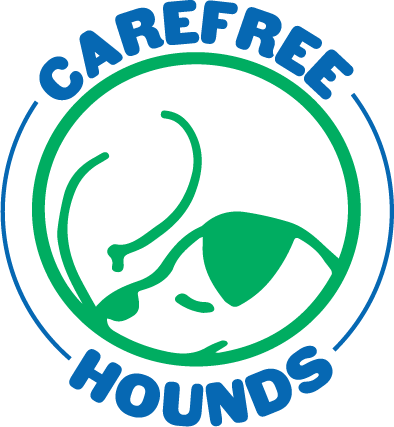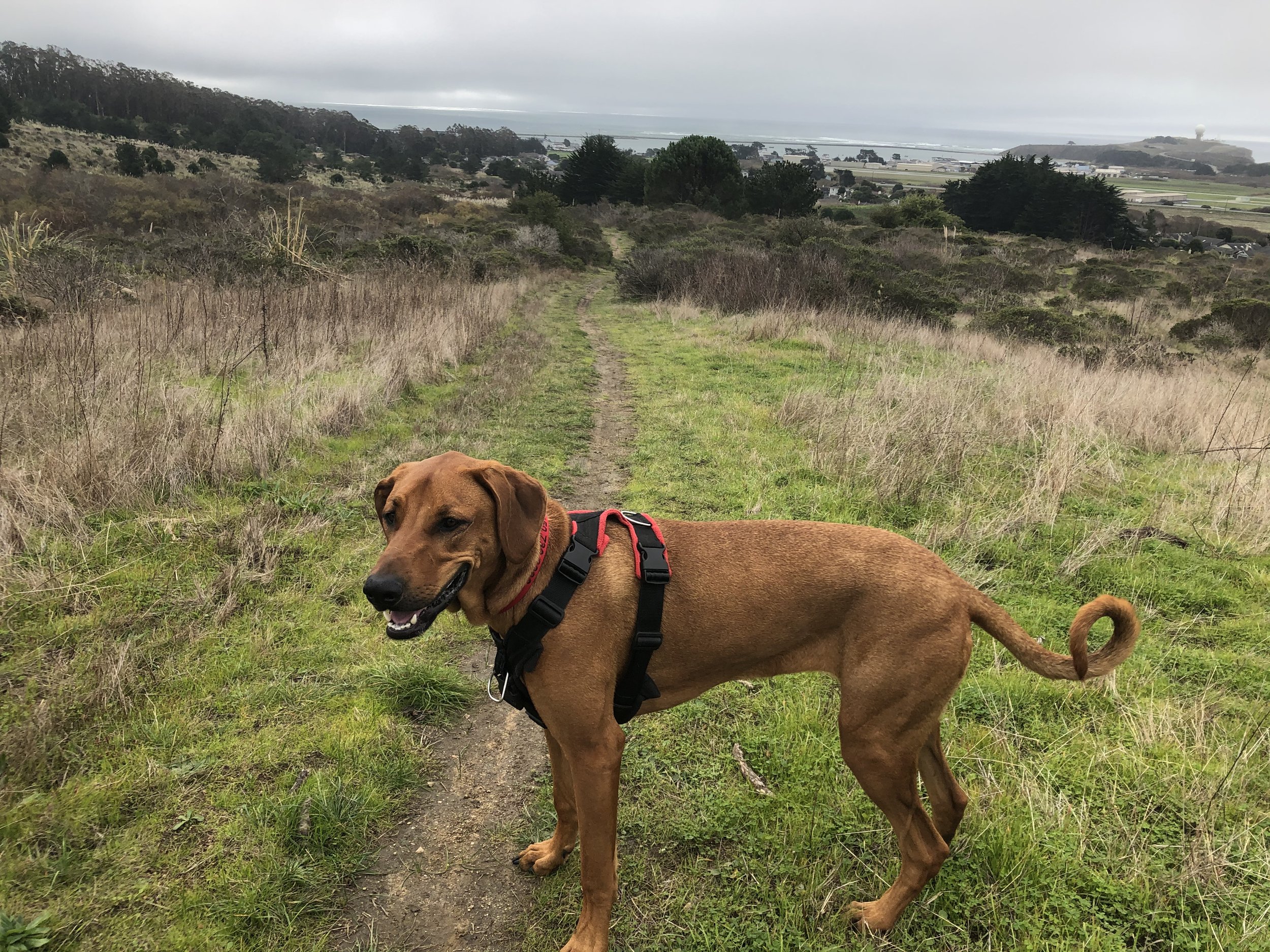Dog and puppy harnesses I recommend
Skye, wearing her Perfect Fit harness.
First off, should your dog even wear a harness?
That depends. Harnesses have different purposes and some are multi-purpose. Whenever a client asks me about using a harness with their dog, I take into consideration the following:
Age & size of the dog
For puppies, learning to wear a harness is a good idea, as it gives them the opportunity for extra handling and getting used to body touches, which is important. It also protects their sensitive trachea if they make some sudden movement with a leash attached to a collar. This is especially true for toy breeds. These dogs will likely wear harnesses throughout their lives.
For adult dogs, if the dog is a large breed, many times people are looking for a solution to pulling on leash. Of course, the first step is training your dog to walk on leash. But that’s the topic for another post.
In this post, I’ll cover the three harnesses that I regularly recommend and why I recommend them.
Harness styles - connection points
Traditionally, harnesses have a leash attachment point on the dog’s back, usually approximately between the dog’s shoulders. This is the most comfortable for the dog and if the dog is not a puller, the leash attachment point prevents the leash from getting tangled in the dogs’ legs.
If the dog is a puller, a leash attachment point at the front of the chest may reduce the dog’s desire to pull. Remember: dogs do what works. And if pulling forward on the leash results in the dog being pulled to the side by a leash attached at the front of the dog’s body, they may choose not to pull. It also gives the handler a lot more control than a connection at the back.
Harness styles - adjustment points
As we all know, dogs come in all shapes and sizes and even if harnesses are supposed to be one size fits all, they aren’t. If you have a dog that’s still growing, you won’t want to have to buy a new harness when she grows out of the old one, so look for one with the most adjustment points. The maximum I’ve ever seen is six.
Harness challenges - fit
Aside from growth, having a harness that fits and is comfortable for the dog is the biggest challenge. Harnesses should not gap or cinch anywhere on the body. Chafing under or behind the front legs is common in poorly fitted harnesses, as is gapping of the chest strap in the front connection harnesses.
Dogs come in all shapes and sizes so if a harness doesn’t fit your pup well, it’s not necessarily a poor harness, just one that doesn’t fit your dog. Always read the instructions that come with the harness to adjust for best fit. Many manufacturers also have videos available through their websites or on YouTube.
My #1 choice dog harness: the Balance harness
Full disclosure: I was so impressed by these harnesses that I signed up to be a reseller.
The Balance harness has six points of adjustment, which I think is the most of any single-piece harness out there. It’s all one piece but has three buckles to make it easy to put on the dog. Unlike many harnesses, this one has a buckle on the neck loop, which is really handy for dogs that really dislike anything going over their heads, as it goes on much more like a collar.
The back strap is a different color and that’s all you need to know to put the harness on correctly. After that, clip the buckles on the girth strap and you’re ready to adjust. Leash attachment points are at the back and the chest via D-rings.
The design of the Balance harness completely avoids your dog’s legs, allowing for much greater freedom of movement in the forelegs area so you never have to worry about chafing.
It’s also a low-profile design, meaning they’ve kept the material to a minimum so that your dog barely knows he’s wearing anything. The materials and hardware and sewing is all top quality.
Price: approximately CA$50, regardless of size
#2 choice: the Perfect Fit harness
I’d be willing to go out on a limb and say that there’s a Perfect Fit harness out there for every dog. This harness actually comes in three pieces, so you absolutely must measure your dog before buying. What’s great is that if your dog is, for example, size L for two of the pieces and XL for a third piece, then that’s what you buy: it’s a modular design. And it still has five points of adjustment: two at the chest/shoulders, two at the girth strap, and the last on the strap that connects the other two.
It’s also completely fleece lined for comfort and all buckles are lined so that you never catch your dog’s skin when closing the buckle. The D-rings and buckles and seams are all top quality. If your dog is done growing, this harness will likely be the last one you’ll ever need for your dog. Once fitted properly, you wouldn’t even notice it comes in three pieces because you only need one or two buckles to do up when you put it on your dog.
Price: between CA$70 and CA$100
#3 Freedom harness
The Freedom harness has four points of adjustment, is lined with velvet on the inside for a more comfortable fit, and has D-ring leash attachment points at both the back and the chest. It also comes with a special Y-shaped leash that you can use to attach at both the back and the chest for more control. I’ve met some dog owners who love this feature but I never felt I had more control with this special leash. Fortunately, you can still use it like a regular 6-foot leash.
The design is a little unintuitive and you’ll probably turn it around in your hands a bit the first few times you use it, but it goes on quickly once you get the hang of it. The back D-ring is on a small martingale-type loop. With the buckles undone, the harness goes over the head so that the small loop is on the dog’s back. When the leash is attached here, this martingale-style loop will tighten slightly when the dog pulls. For most dogs this won’t be enough to stop them from pulling and for some dogs the pressure of it tightening around their torso might be aversive.
Of the harnesses I’ve used that are designed specifically with a no-pull effect in mind, this one is better than most. Chafing is still possible but much less than with most other harness styles.
Price: approximately CA$50, depending on the retailer.

